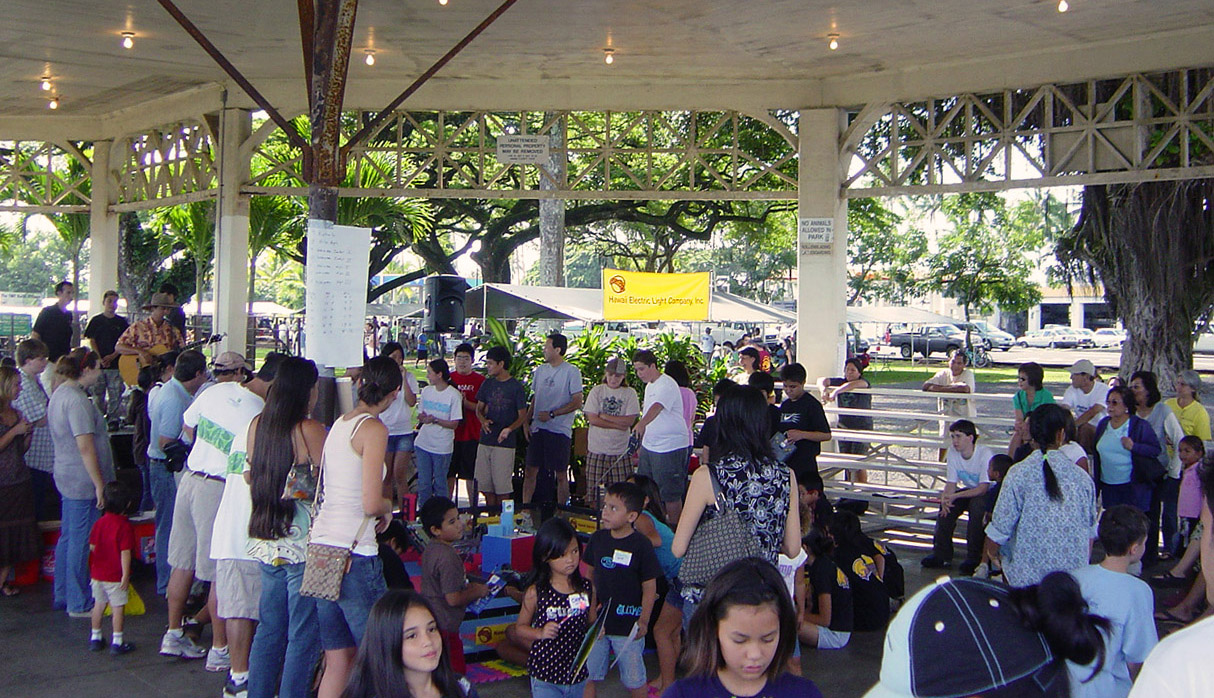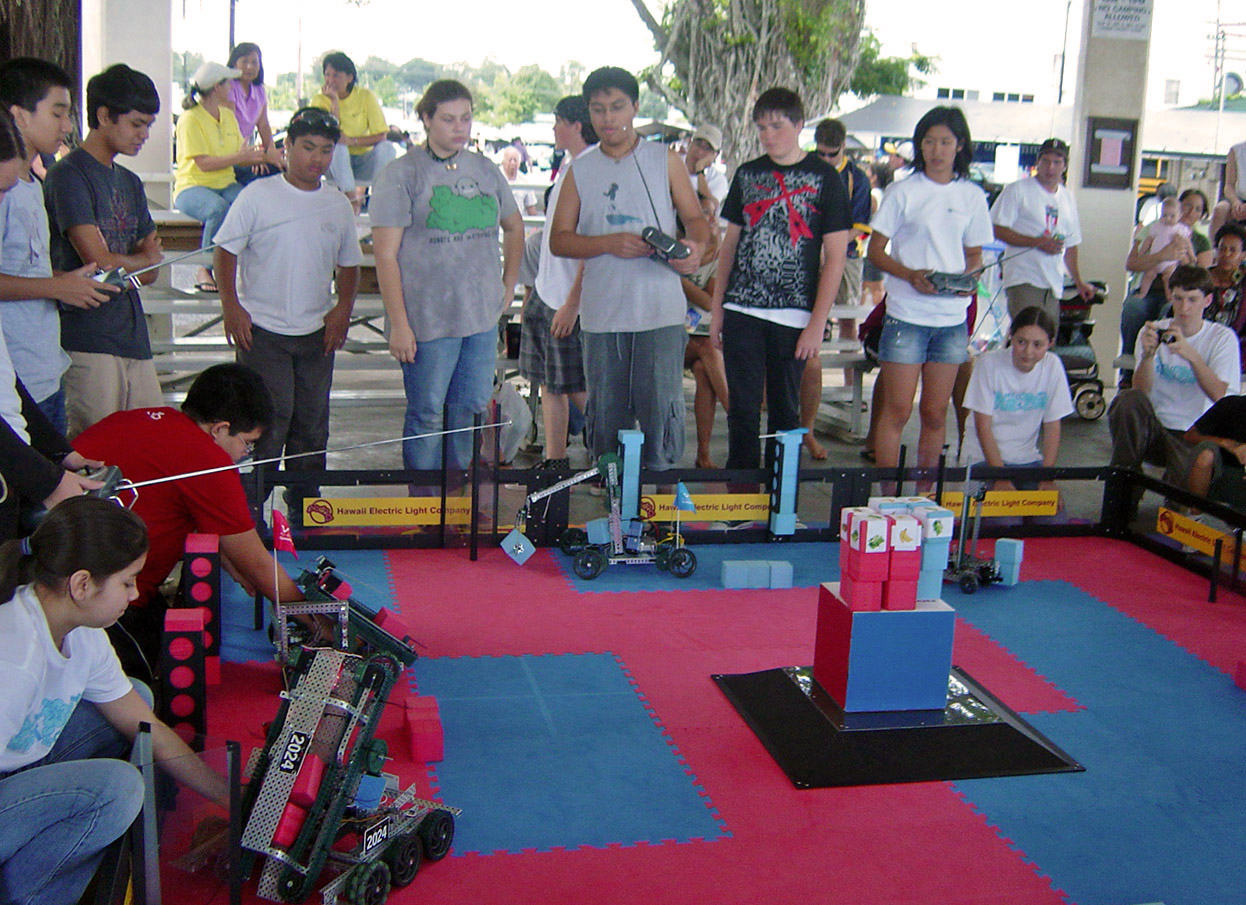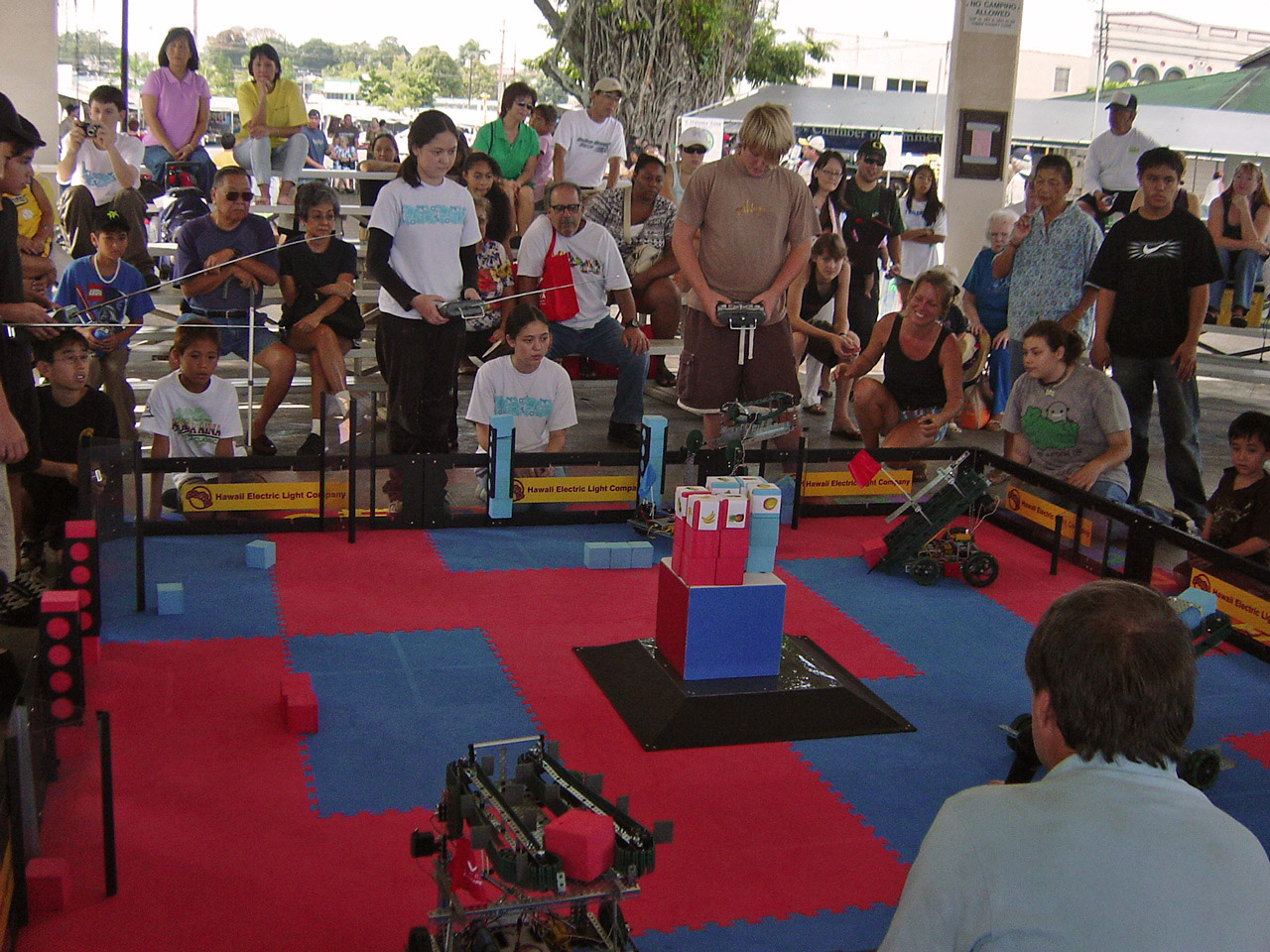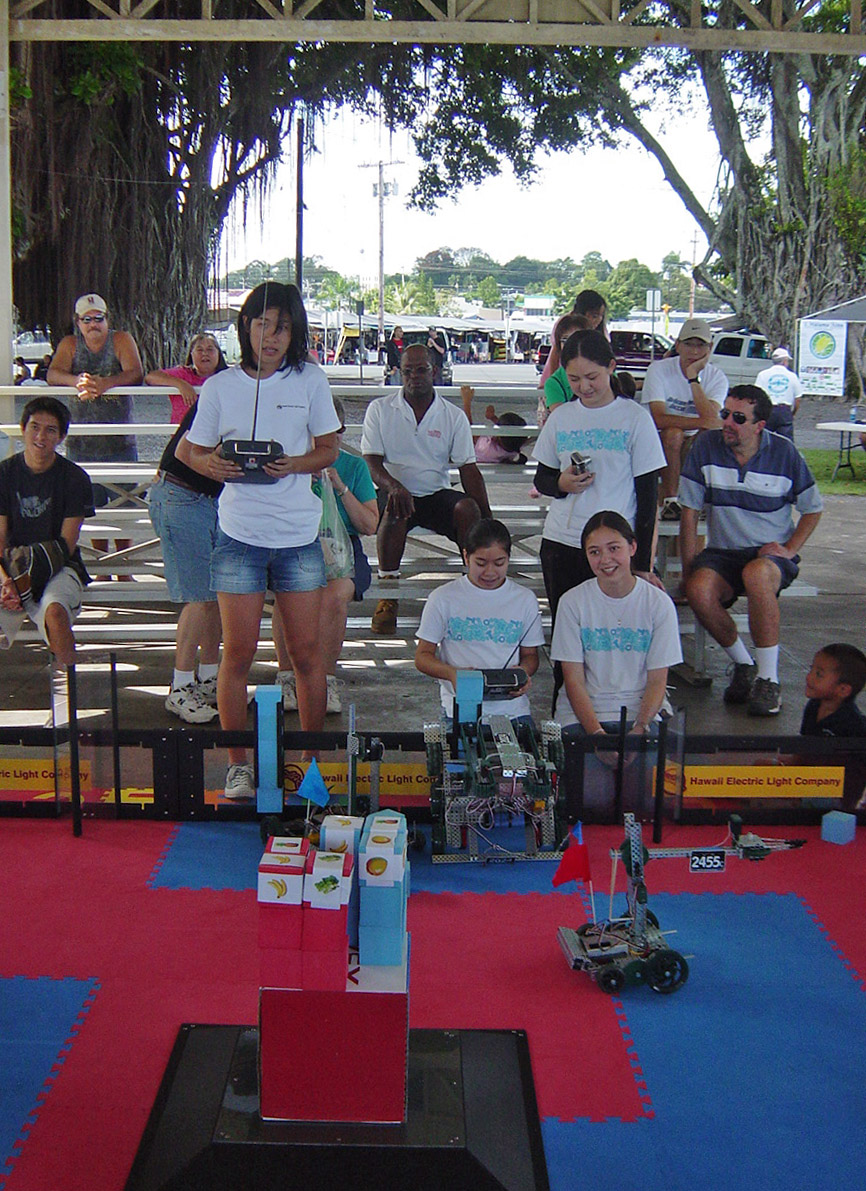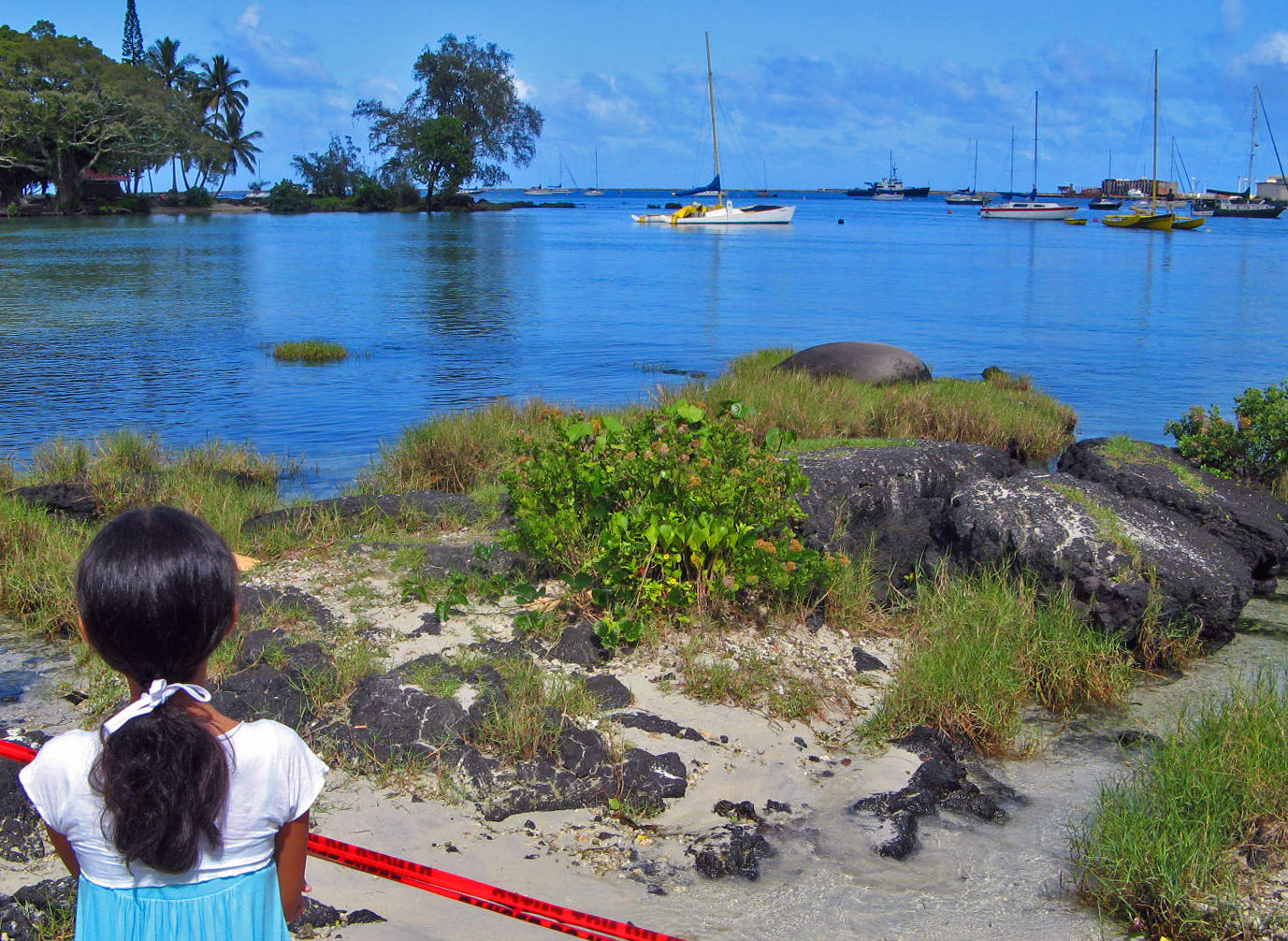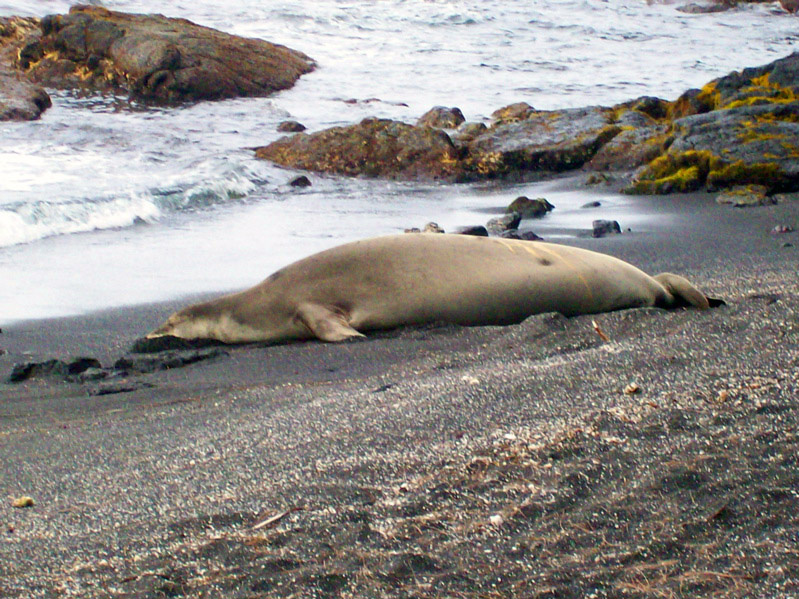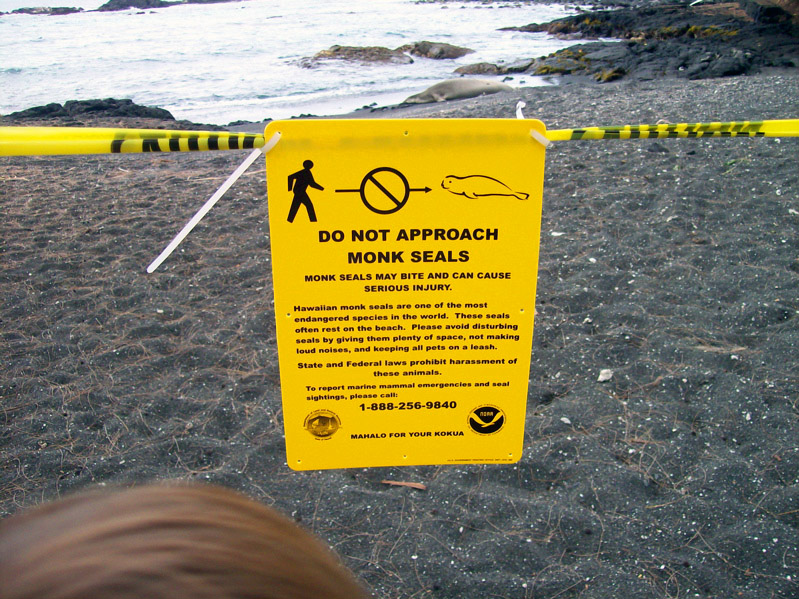Last month, at the E Malama ‘Aina Sustainability Festival Richard helped organize, I was interested to see that there was a Robotics exhibit.
I asked Art Kimura, Education Specialist for the Hawai‘i Space Grant Consortium at UH Manoa, to define Robotics for me and he replied that first of all, robots don’t have to be cartoon-like, science fiction things.
He defined a robot as “a mechanical device that does human-like tasks,” and told me that we have robots all over the place, though we don’t call them that.
“A traffic light is a robot, for instance,” he said. “It’s instead of a policeman standing there in the street. Or a fire alarm, instead of someone there sensing that there is smoke.”
My other question to Art: Why a Robotics exhibit at a sustainability festival?
He had a good answer. “Most of the efforts toward sustainability, which involve things like alternative energy, require a generation of workers that have innovation and technical skills,” he said. “No matter what, we have to rely on improving technology to make some of these things happen. Workforce development, to have students that aspire to become part of the solution to sustainability problems, is a critical piece of that.”
The Hawai‘i Space Grant Consortium at UH Manoa is a NASA-funded group “developing an educational foundation focused on scholarship, research and exploration, enabling scientists and engineers of the future.” Robotics is just one of the projects it supports.
Art said that every state has Robotics. “But what’s unique about Hawai‘i is that we have a state organization that helps to coordinate and support these programs,” he said. “More than a million dollars was spent on Robotics in Hawai‘i this year alone. We actually had legislation passed in support of a statewide program.”
“It’s really a beautiful situation we have in Hawai‘i,” he said. “I don’t hear of any other states with this type of support.”
Hawai‘i’s schools’ Robotics programs – six different types of programs, which have existed here for 11 years and involve kids from grades 1 to 12 – use Robotics to get students interested in STEM subjects: science, technology, engineering and mathematics.
Art said that the evidence is compelling that Robotics inspires students. “Many become engineers,” he said. “Waiakea High School can list all these kids that went into engineering, and the kids will tell you it was because of their experience with Robotics.”
“And we need kids who are in the trade industry, too; who are able to weld, do electronics. More importantly, Robotics teaches life skills like problem solving.”
He talked about how students have to collaborate to build their robots, and use them in a sport-like competition as part of a team. “There’s disappointment, failure, success. They have to communicate their goals and compromise,” he said. “Everything we like in a good worker.”
There was a Robotics competition this weekend at the Hawai‘i Convention Center in Honolulu. High school teams from Hawai‘i competed against others from Hong Kong and California.
The Big Island’s Kohala team was undefeated through the first seven matches, and the Waiakea team made it all the way to the final match. Both will go to Dallas in the spring for the next competition.
In September, a combined Waiakea and Hilo High School team competed against college students in Japan. There were 83 entries from 19 universities and only four high schools. Impressively, the Big Island high school team won several significant awards and ended up in the top three.
“They’re learning things that in the past only college students learned,” said Art. “They don’t know it’s too hard for them. They do it because it’s fun.”
“Most Robotics is after school,” he said, “and you’ll go by there at 6:30, 7:00 at night and there are 20, 25, 30 students there, just hanging out. One of the complaints I get from teachers is that the kids don’t want to go home. That’s a good complaint.”
One of the Hawai‘i Robotics programs teaches a concept they call “gracious professionalism.”
“The idea is that we want to raise the bar and not be satisfied with where we are now,” said Art. “The students collaborate. They’re encourage to share, even their designs, even though they’re competing.
“Sharing makes everybody better.”

